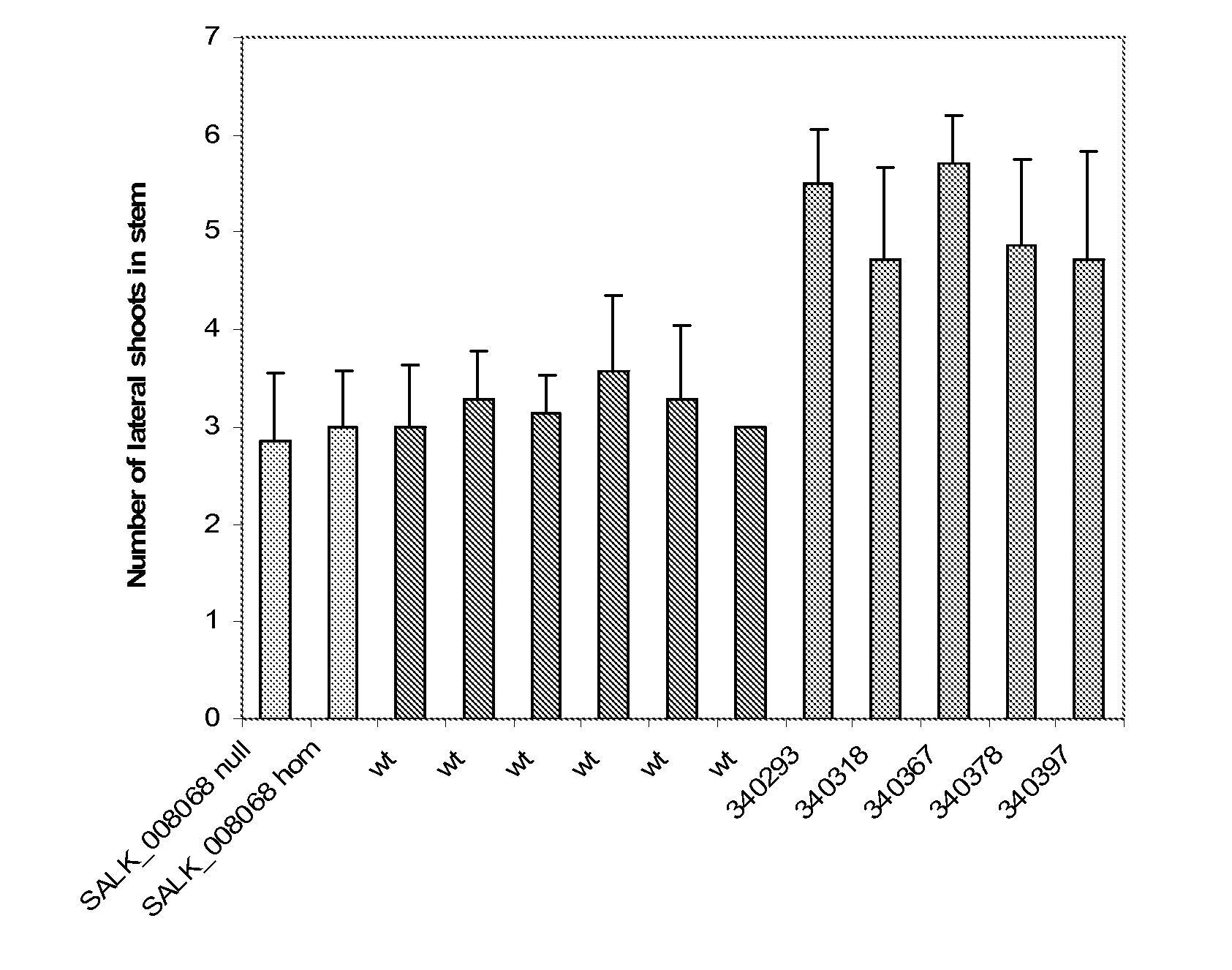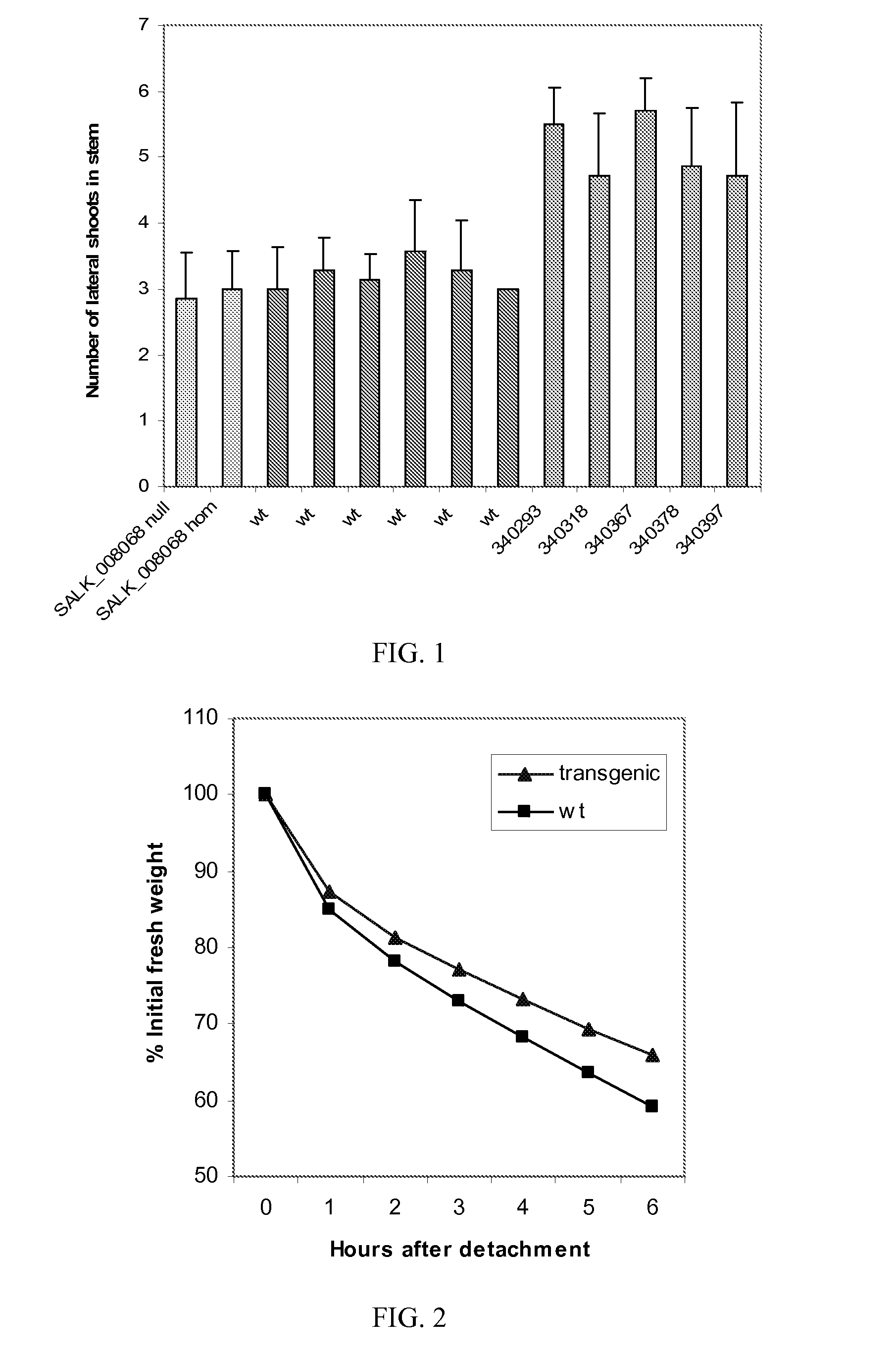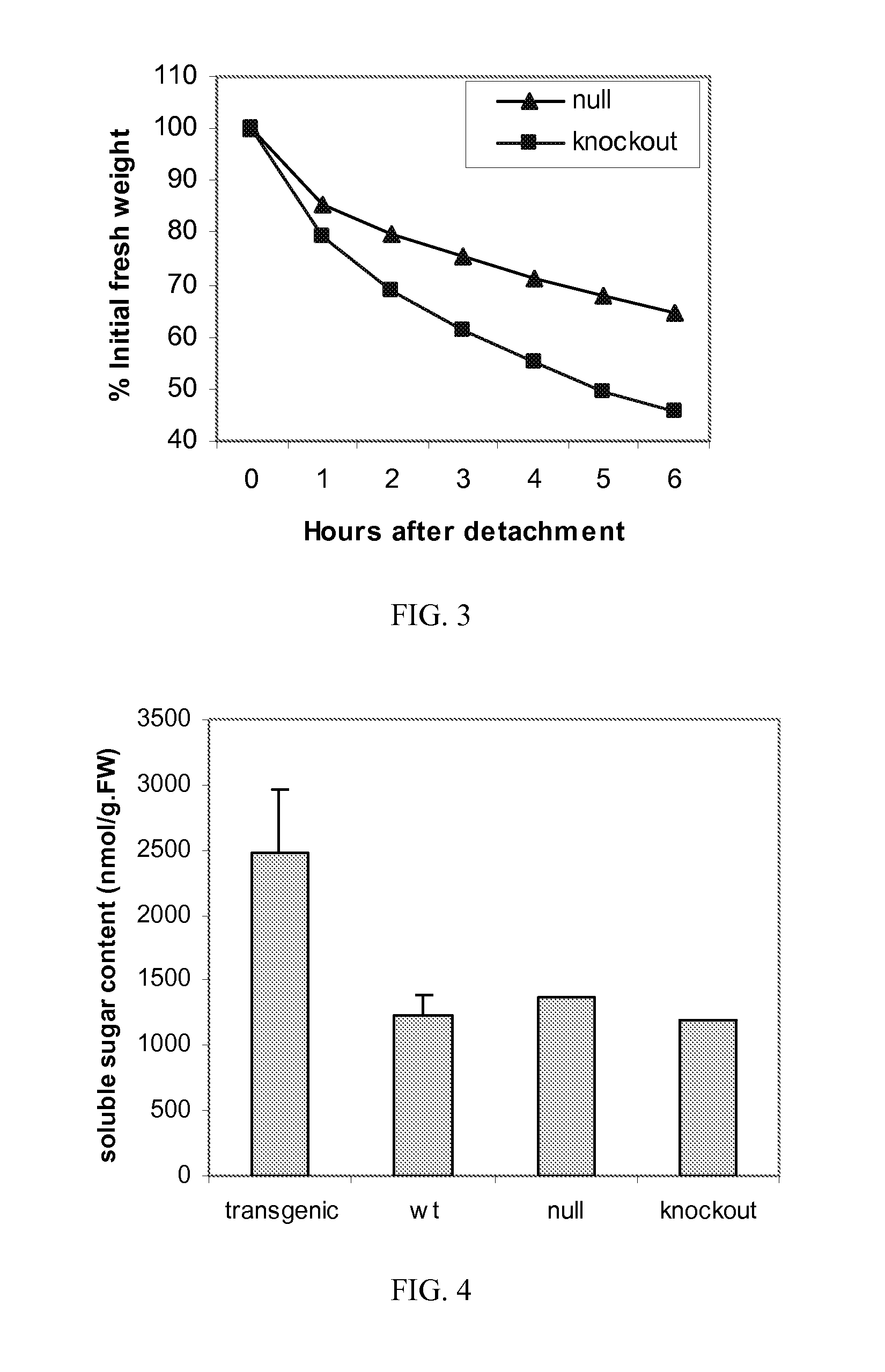Plant snf1-related protein kinase gene
a technology of kinase and plant, which is applied in the field of plant genes, can solve the problems of underlining the complex functionality of each kinase, and achieve the effects of reducing the number of snf1-related protein kinase, and reducing the number of snf1-related proteins
- Summary
- Abstract
- Description
- Claims
- Application Information
AI Technical Summary
Benefits of technology
Problems solved by technology
Method used
Image
Examples
example 1
Identification of T-DNA Insertion into Arabidopsis SnRK Genes by PCR
[0056]According to sequence similarity, Arabidopsis SnRK kinases can be divided into three subgroups, SnRK1, SnRK2 and SnRK3. SnRK1 subgroup includes three kinases encoded by At3g01090, At3g29160, and At5g39440, respectively. SnRK2 subgroup consists of ten members corresponding to the genes At4g40010, At2g23030, At1g60940, At1g10940, At5g63650, At5g08590, At1g78290, At3g50500, At5g66880, and At4g33950, respectively. SnRK3 is the largest subgroup with 25 members encoded by the genes: At5g57630, At3g17510, At1g48260, At4g24400, At5g35410, At2g26980, At1g30270, At1g01140, At4g14580, At3g23000, At2g38490, At5g01820, At2g30360, At2g34180, At1g29230, At5g45810, At4g18700, At4g30960, At5g45820, At5g58380, At5g07070, At5g01810, At2g25090, At5g25110, and At5g10930.
[0057]In SALK lines with T-DNA insertion into SnRK genes, plants homozygous, heterozygous and null for the insertion were screened by PCR as shown in Tables 1 and ...
example 2
Arabidopsis Seed Fatty Acid Methyl Ester Analysis
[0059]Extraction and Derivatization of Arabidopsis Seeds
[0060]Mature Arabidopsis seeds were harvested and all non-seed plant matter removed. From the total seed harvested, ˜10 mg aliquots were taken and distributed into 1 ml capacity 96-well plate. Precise weight measurements were obtained by the use of an analytical balance with and accuracy of + / −2 μg and recorded. The well plate was rinsed with hexane prior to use and two 4 mm diameter stainless steel homogenizing bead placed into each well. After sample distribution, 0.4 ml hexane containing 75 ppm methyl heptadecanoate and 0.2 ml 0.5 M sodium methoxide was dispensed to each well. The well plate was then capped and placed into a vertical shaker for two minutes at 500 strokes per minute then changed to 58 minutes at 250 strokes per minute. Once shaking was complete, the well plate was then centrifuged for five minutes at 5600 ref. After centrifuging, the top hexane extract layer wa...
example 3
Arabidopsis Leaf Fatty Acid Methyl Ester Analysis
[0063]Extraction and Derivatization of Arabidopsis Leaf Lipids
[0064]Frozen Arabidopsis leaves were ground to fine powder under liquid nitrogen by using mortar and pestle. From this powder ˜50 mg aliquots were taken and distributed into 1 ml capacity 96-well plate. The well plate was rinsed with hexane prior to use and a 4-mm diameter stainless steel homogenizing bead placed into each well. After sample distribution, 0.5 ml hexane and 0.25 ml 0.5 M sodium methoxide was dispensed to each well. The well plate was then capped and placed into a vertical shaker for 30 minutes at 250 strokes per minute. The well plate was then centrifuged for 5 minutes at 5600 ref. After centrifuging, the top hexane extract layer was taken and placed into another 96-well plate for analysis by gas chromatograph flame ionization.
[0065]FAME's Analysis
[0066]The resulting fatty acid methyl esters Arabidopsis leaf lipids were resolved on a SGE BPX70 capilary colum...
PUM
| Property | Measurement | Unit |
|---|---|---|
| weight | aaaaa | aaaaa |
| diameter | aaaaa | aaaaa |
| flame ionization detector temperature | aaaaa | aaaaa |
Abstract
Description
Claims
Application Information
 Login to View More
Login to View More - R&D
- Intellectual Property
- Life Sciences
- Materials
- Tech Scout
- Unparalleled Data Quality
- Higher Quality Content
- 60% Fewer Hallucinations
Browse by: Latest US Patents, China's latest patents, Technical Efficacy Thesaurus, Application Domain, Technology Topic, Popular Technical Reports.
© 2025 PatSnap. All rights reserved.Legal|Privacy policy|Modern Slavery Act Transparency Statement|Sitemap|About US| Contact US: help@patsnap.com



